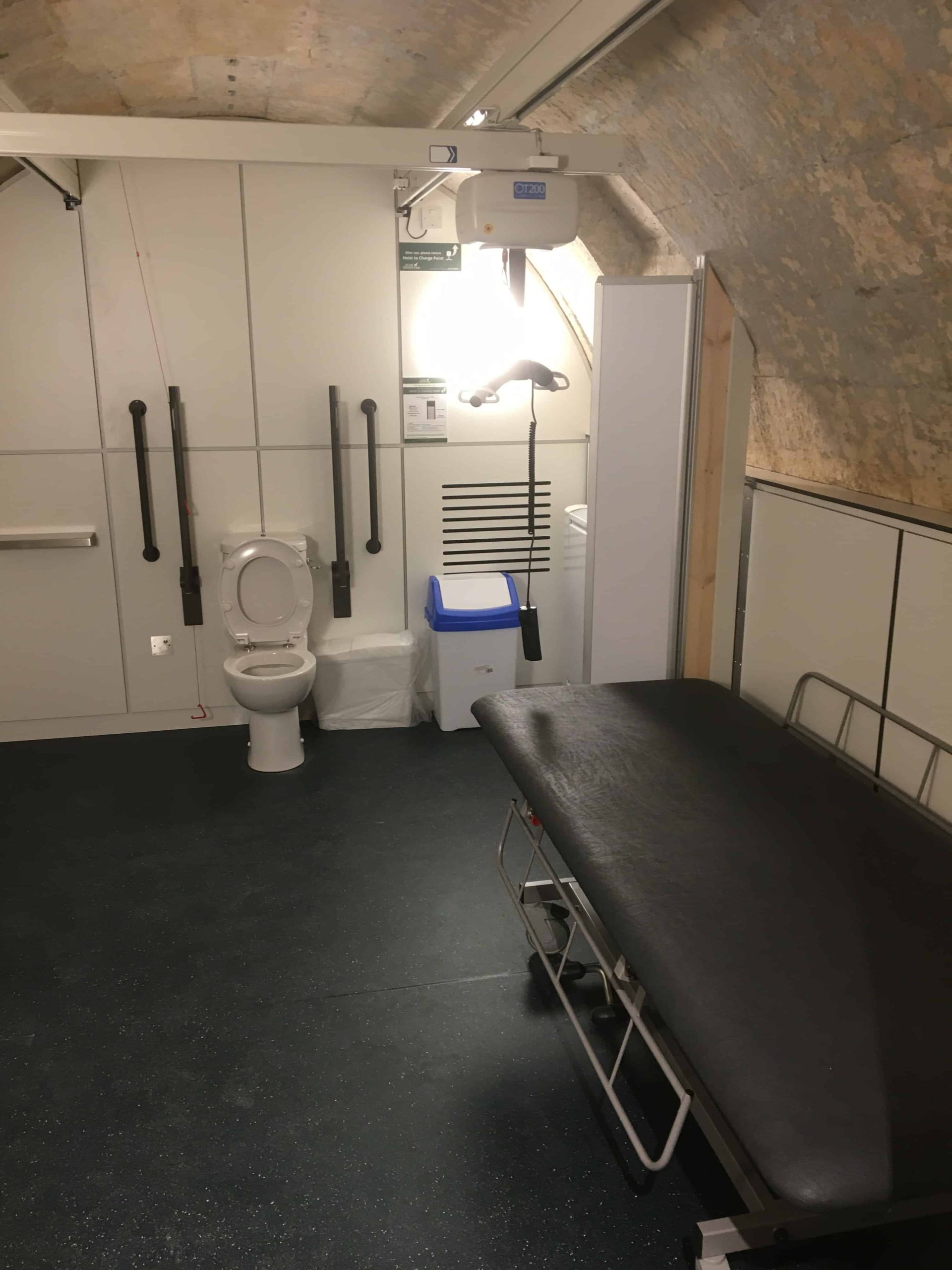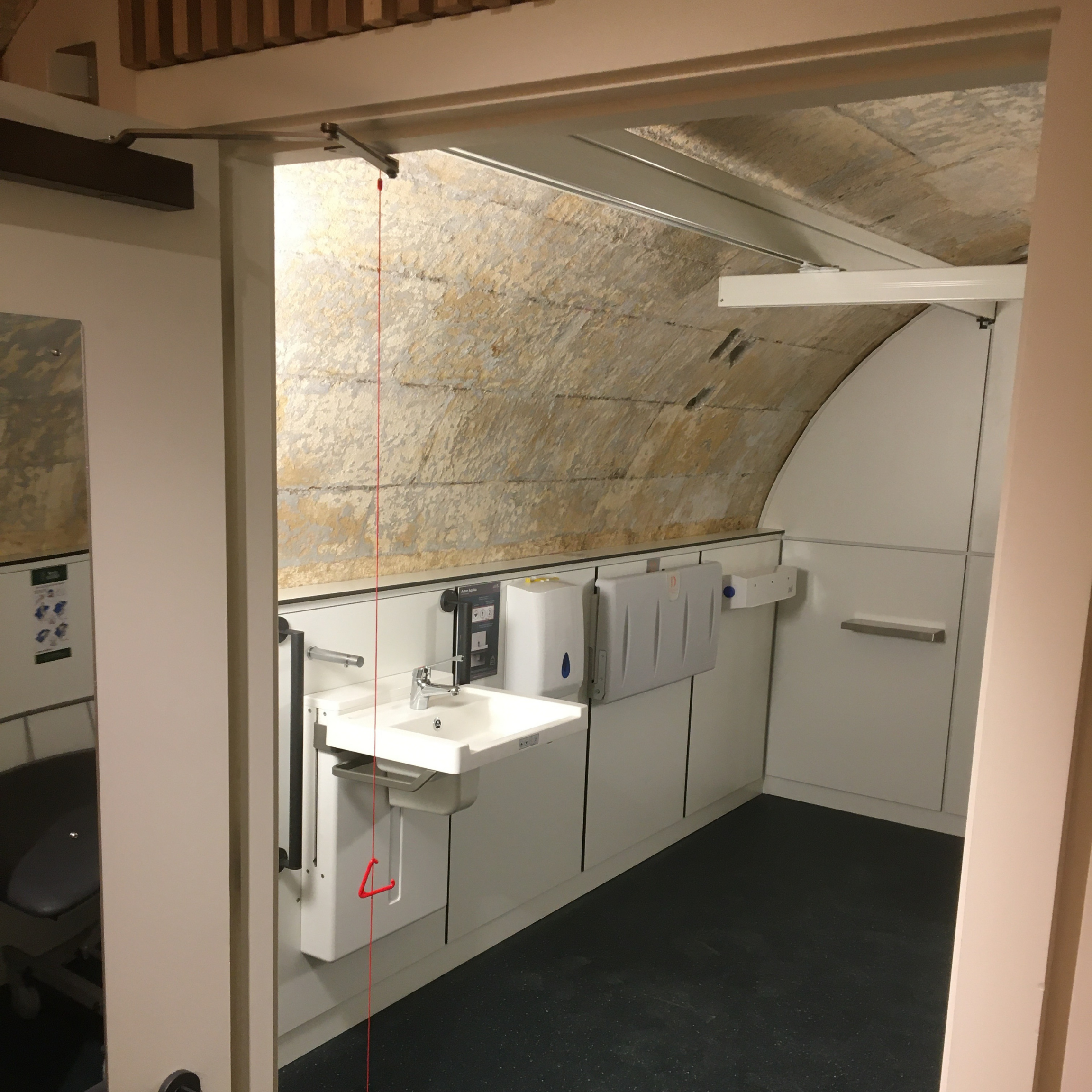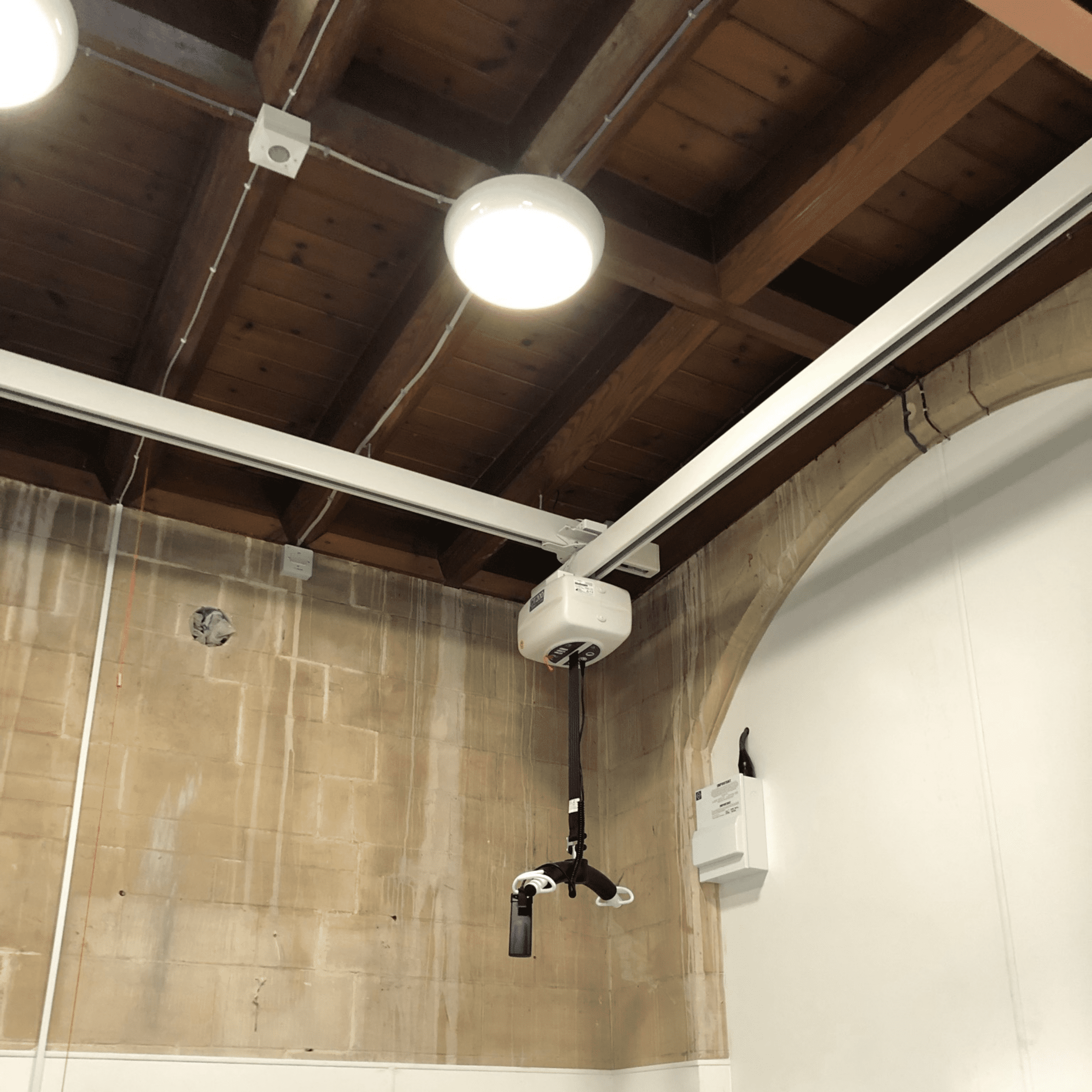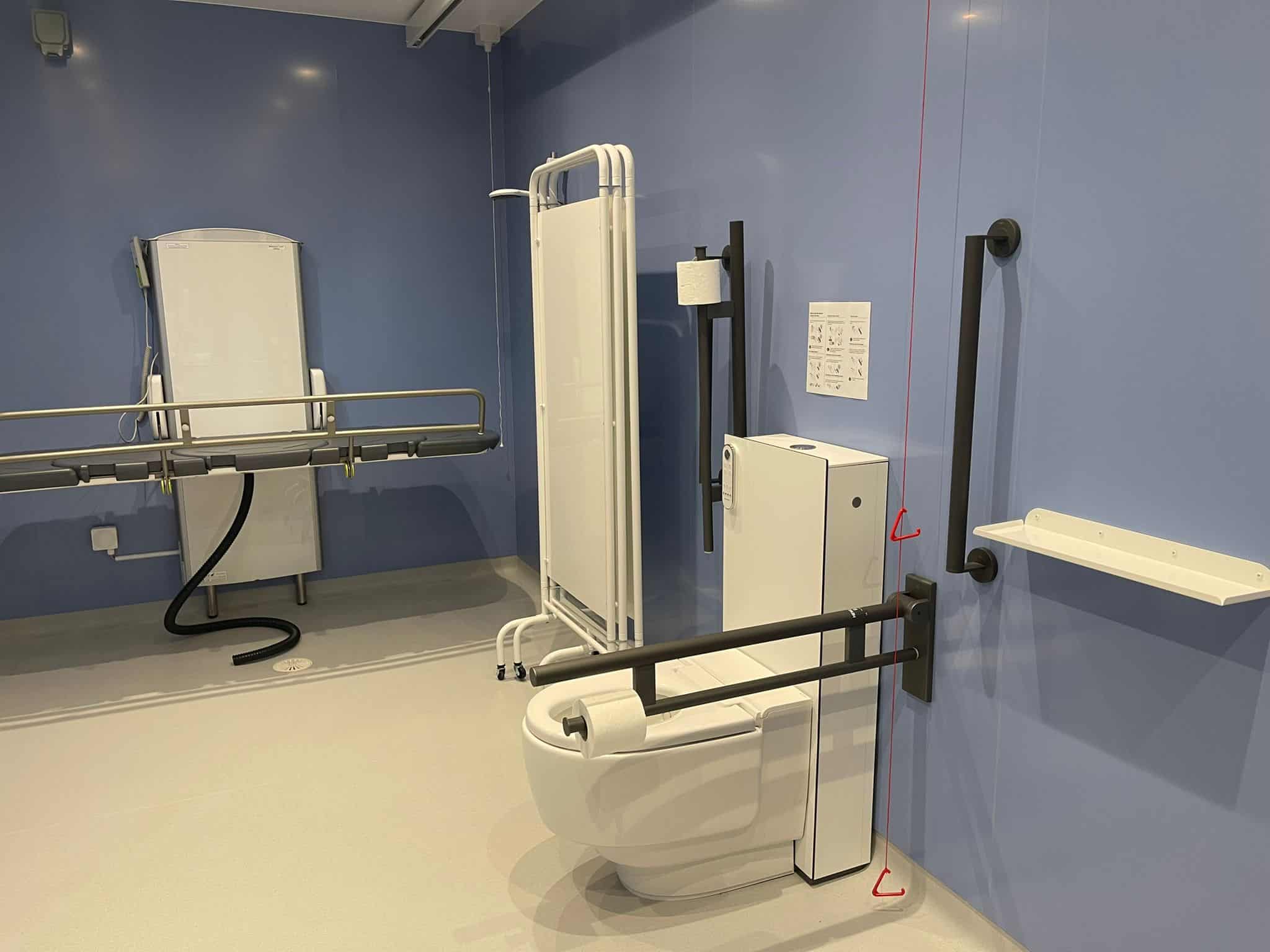Changing Places Toilets: A ‘How To’ Guide for Places of Worship and Community Hubs
Bath Abbey, a magnificent historic building in the heart of Bath, had a Changing Places toilet installed last year to boost accessibility for its visitors. In common with a lot of historic buildings, the space was not ideal. It is a listed building, and the room itself had a low vaulted ceiling, making it difficult to install a full coverage hoist and attach other equipment to the walls.



Bath Abbey is an extreme case, but it has a lot in common with places of worship around the country, which often struggle to plan for the installation of Changing Places Toilets due to space and planning issues. Often, they offer a variety of services to the community, and welcome a wide range of people through their doors. Some also function as a community hub, offering space for local groups and meetings. It is therefore essential that as much as possible is done to make them accessible, and the addition of a Changing Places toilet can really help with that.
St Catharine’s Church in Gloucester is a historic church that also operates as a community hub. It welcomes disabled people to services and to various
 community activities and wanted to improve the limited toilet facilities available to make visiting easier for all. After fundraising and planning, their new Changing Places Toilet was officially opened in August 2021.
community activities and wanted to improve the limited toilet facilities available to make visiting easier for all. After fundraising and planning, their new Changing Places Toilet was officially opened in August 2021.
The Christchurch Centre is another example of a church that offers extensive community support, this time in a relatively modern building. They offer meeting and conference space, host local groups, run clubs and work to help people in need. They were keen to install a Changing Places Toilet in the building to ensure that their facilities are as inclusive as possible, and they are able to welcome families and groups with disabled members, and cater for people travelling down the nearby M4.
St. Catharine’s Church in Gloucester
So how did the planning and design process work for Bath Abbey, St. Catharine’s and the Christchurch Centre? And what do places of worship need to consider generally when thinking about the installation of Changing Places toilets for their visitors?
 CHANGING PLACES FOR PLACES OF WORSHIP & COMMUNITY HUBS: THINGS TO CONSIDER
CHANGING PLACES FOR PLACES OF WORSHIP & COMMUNITY HUBS: THINGS TO CONSIDER
The team at Aveso can give general advice about the planning the installation of Changing Places Toilets. As well as giving guidance on equipment requirements and layout, the broader considerations detailed below are also discussed, and they are relevant for a lot of places of worship and community hubs:
Legislative Requirements
Under the Government’s Changing Places rules, which came into force in January 2021, new build or renovated assembly, recreation and entertainment buildings (including places of worship) with a capacity for 350 or more people must have at least one Changing Places Toilet.
For more information visit www.gov.uk
Design Challenges
Installing Changing Places Toilets in historic buildings like churches can be challenging so it is imperative that experts in the installation of Changing Places Toilets are consulted at the planning and design stages. This helps to ensure that the toilet is installed in a way that is compliant, safe and sensitive to the nature of the building.
At Bath Abbey, due to the low vaulted ceiling it was decided to make the hoist self-supporting by attaching it to posts which were sunk into the floor. The hoist was placed in the centre of the room, giving access to the toilet, while a mobile changing table was used, which can be moved to a position underneath the hoist when needed. The Astor Aquba height-adjustable wash basin was included as this particular sink has a small footprint, making it easier to install on a low wall.
In St. Catharines, it was necessary to attach the ceiling track to existing wooden joists, where the age, positioning and material was considered so that the correct fixing method was used.
Both these installations were planned and carried out by Astor Bannerman.


Access, Location and Signage
It is important that Changing Places toilets are easy to access within places of worship and community hubs, and include clear signage to direct visitors to the facility. For Bath Abbey, architects at Feilden Clegg Bradley Studios and Mann Williams Consulting Civil and Structural Engineers worked with the Changing Places Toilet installers Astor Bannerman [link] to plan a Changing Places toilet location that worked within the very unique space while still giving disabled visitors and their carers the functionality they need. It was decided to locate the toilet on the lower ground floor, opposite an accessible lift to provide easy access.
In St. Catharine’s Church, it was decided to locate the Changing Places Toilet in the foyer of the church, where there are wide doors with level access to the church and the room itself.
The new Christchurch Centre Changing Places Toilet was adapted from an existing toilet space and is situated off the main lobby (with wide doors and ramp) to give easy access for all visitors to the church.
Checks and Maintenance

It is important that regular checks are made to Changing Places toilets in churches and community hubs. This is to ensure that all equipment is in working order and ready for next use. Large volumes of people may be using the toilet, so hygiene and working equipment is paramount.
General Public Access
Have a view to making your Changing Places toilet as accessible as possible to visitors and the general public. This offers a safe and accessible facility for the local community as well as your venue. Bath Abbey’s Changing Places Toilet is open whenever the Abbey is open, which is free to enter. It is in the centre of Bath so provides a useful facility for visitors to the city.
‘Christchurch Centre blue’ was used in the Changing Places Toilet
Both the Christchurch Centre and St. Catharines’ are open to everyone.
Branding and Theming
Think about ways you can tie in your Changing Places toilet with your brand or vision. The newly installed Changing Places Toilet in the Christchurch Centre, Newport, features blue walls to match the colours the church and community hub use elsewhere.
ABOUT AVESO
The team at Aveso are passionate about Changing Places toilets both in the UK and worldwide. They have supported the official Changing Places campaign since 2013, and are the leading experts, provide free, expert advice on all aspects of the Changing Places planning and design process.
ABOUT ASTOR BANNERMAN
Astor Bannerman offer the full range of products specified by Changing Places regulations, including fixed and mobile changing tables, hoists, height adjustable washbasins, toilets and accessories. The team at Astor Bannerman are always developing new products, and are proud to have developed the Astor Invincible, the first changing table designed specifically for Changing Places toilets. It was designed and manufactured in Astor Bannerman’s factory in Gloucestershire.

